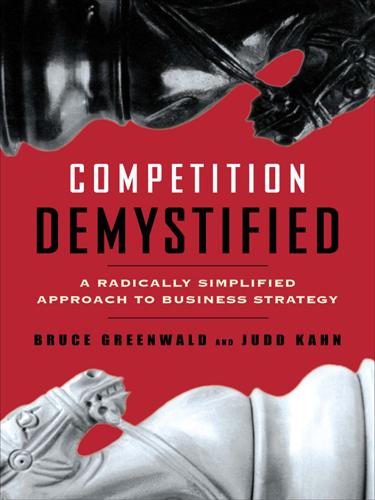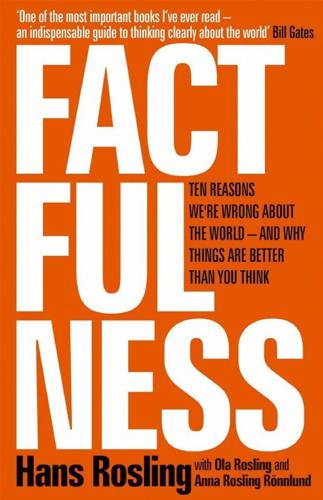revenue passenger mile
description: unit for revenue passenger transport work defined as the number of persons in a vehicle multiplied by kilometers transported
5 results

Competition Demystified
by
Bruce C. Greenwald
Published 31 Aug 2016
Sometimes the challenger was simply too egregious, and incumbents retaliated not simply to keep their passengers but to drive the upstart out of business. The more strategic response, developed over some years after 1978, involved the use of a complex and opportunistic fare system to manage “yield” and “load.” The airlines defined “yield” as revenue divided by revenue passenger miles (the number of passenger seat miles actually sold), “load” (or “load factor”) as revenue passenger miles divided by available seat miles. Using their computerized reservations systems, the airlines could offer identical seats at wildly different prices, depending on travel restrictions, time of purchase, and the remaining availability of seats.
…
Pilots as managers could fly planes, if the need arose and a scheduled pilot called in sick. Before it began flying, the company calculated that it could break even if it filled around 50 percent of its seats. Its cost structure was planned to come in at 20 percent lower than United’s per revenue passenger mile. Though this savings was substantial, South-west’s cost were some 18 percent lower still. But lower costs did not present the same kind of frontal challenge to the established airlines that well-advertised lower fares might. Kiwi did not want to arouse the slumbering giants. WHAT THE INCUMBENTS SAW At first, Kiwi made it easy for United, American, Delta, and Continental to ignore it.

Skygods: The Fall of Pan Am
by
Robert Gandt
Published 1 Mar 1995
Best of all, at least for wary passengers, they looked and felt like conventional propeller-driven airliners powered by conventional engines. Claptrap, snorted Juan Trippe. Smith was leading the chorus of the Primitives. To Trippe, the jet was imminently logical and inevitable. Never mind the whining about development expense and cost per copy and revenue-passenger-mile cost and noise and range and economy. Those problems would be solved. They always were. Speed, for its own sake, was not the most important factor. Flying the Atlantic in half the time of its propeller-driven predecessors meant the jet could transport many more passengers in the same time frame.
…
Here it was, setting industry standards for leaving on time, delighting its passengers, even sweeping the halls and cleaning up the johns—and it was still losing $2 million a day. Why couldn’t Pan Am make money? Well, actually. . . nobody could say. No one had ever delivered a simple, concise answer, any more than anyone had explained why Pan Am made money at one time. When Plaskett trotted out his cue cards and recited statistics about RPMs (revenue passenger miles) and load factors (percentage of seats filled) and yield (how much you were getting—or in Pan Am’s case, weren’t getting—from your product), it sounded like a lot of smoke from a number cruncher, which it was. The audience listened politely, scratched their heads, and wondered: What the hell does it mean?

The Rise and Fall of American Growth: The U.S. Standard of Living Since the Civil War (The Princeton Economic History of the Western World)
by
Robert J. Gordon
Published 12 Jan 2016
The growth rate between 1929 and 1950 was 6.2 percent, followed by an acceleration to 8.0 percent between 1950 and 1980. But then diminishing returns set in; the annual growth rate from 1980 to 2012 was a mere 1.1 percent. In fact, vehicle miles per person in 2012 were 6.4 percent lower than in 2004. Airline revenue passenger miles (RPMs), also shown in figure 11–1, exhibited the same phenomenon of slowing growth. It is natural for any industry to experience rapid growth after a fundamental invention and then to have demand for its product level off as the product reaches maturity. Growth in RPMs per person reached 32 percent per year between 1940 and 1960, 16.5 percent between 1960 and 1980, and 7.8 percent between 1980 and 2000.
…
Traffic tripled in the 1950s, tripled again in the 1960s, doubled in the 1970s, and almost doubled in the 1980s before slowing to a crawl. RPMs per person stopped growing after 2000, with the growth rate between 2000 and 2013 at the turtlelike pace of 0.6 percent per year. Figure 11–1. Vehicle-Miles per Person, Railroad Passenger-Miles per Person, and Airline Revenue Passenger-Miles per Person, 1900–2012 Source: Federal Highway Administration Table VM-201, HSUS series Df413-415, Df903, Df950, and Aa7, Traffic Safety Facts NHTSA Chapter 1 Table 2, SAUS 2014 Table 1120, A4A Annual Results U.S. Airlines Table, HSUS Series Df1126-1138, Airline RPM after 1948 from A4A Annual Results U.S.
…
–Canadian border, the closely parallel Great Northern and Northern Pacific, the closely parallel Union/Central Pacific, Kansas Pacific, and Santa Fe, and near the Mexican border the Southern Pacific from New Orleans to Los Angeles. 13. The best recent source is White (2011). Classic earlier references include Chandler (1977). 14. Stilgoe (2007, p. 115). 15. System revenue passenger miles from the Bureau of Transportation Statistics. 16. As shown in table 5–1, in 1870 elapsed railroad times between major cities were between twenty and twenty-five miles per hour. 17. Cronon (1991, p. 77) displays iso-travel time graphs for 1830 and 1857. 18. This and other details in the previous two paragraphs come from Cronon (1991, pp. 76–78). 19.

Factfulness: Ten Reasons We're Wrong About the World – and Why Things Are Better Than You Think
by
Hans Rosling
,
Ola Rosling
and
Anna Rosling Rönnlund
Published 2 Apr 2018
“Theories of Fertility Decline and the Evidence from Development Indicators.” Population and Development Review 33, no. 1 (March 2007): 101–27. BTS[1]. (US Bureau of Transportation Statistics). US Air Carrier Safety Data. Total fatalities. National Transportation Statistics. Table 2-9. Accessed November 24, 2017. gapm.io/xbtsafat. BTS[2]. Revenue Passenger-miles (the number of passengers and the distance flown in thousands (000)). T-100 Segment data. Accessed November 4, 2017. gapm.io/xbtspass. Caldwell, J. C. “Three Fertility Compromises and Two Transitions.” Population Research and Policy Review 27, no. 4 (2008): 427–46. gapm.io/xcaltfrt. Carson, Rachel.

Hard Landing
by
Thomas Petzinger
and
Thomas Petzinger Jr.
Published 1 Jan 1995
Dubinsky immediately went into action. If the bitter strike had proved anything, in Dubinsky’s view, it was that airline pilots were nothing more than hired help. “Airline pilots are simply a form of high-paid production workers,” he would later declare in a speech at Harvard. “We produce revenue-passenger miles instead of widgets, TV sets, or shoes.” Pilots, though long accustomed to thinking of themselves as “professionals,” were not in fact professionals at all by the standard definition, Dubinsky realized: a professional could go into business for himself, could hang out his own shingle. Airline pilots could do none of that.
…
“run a lawn mower”: Burr 9/16/93 interview. 11. had been wrapped up: Burr 9/17/93 interview. 12. plan to reform: Burr’s scheme was detailed in the 9/16/93 interview. A copy of the plan was made available to the author by another party. 13. “Don, come here”: Burr 9/16/93 interview. 14. “Carney rolls the spitballs”: Coats 6/9/94 interview. 15. The next four: Based on 1978 rankings according to revenue passenger miles. 16. fact that appalled Lorenzo: “Texas International’s Lorenzo Believes He Has a National Grasp,” by Nicholas C. Chriss, Los Angeles Times, Oct. 29, 1978. 17. never been a hostile: Davies, Continental Airlines, page 85. 18. Slowly and imperceptibly: Russell, Miami Herald, Aug. 6, 1978. 19. hands were trembling: J.